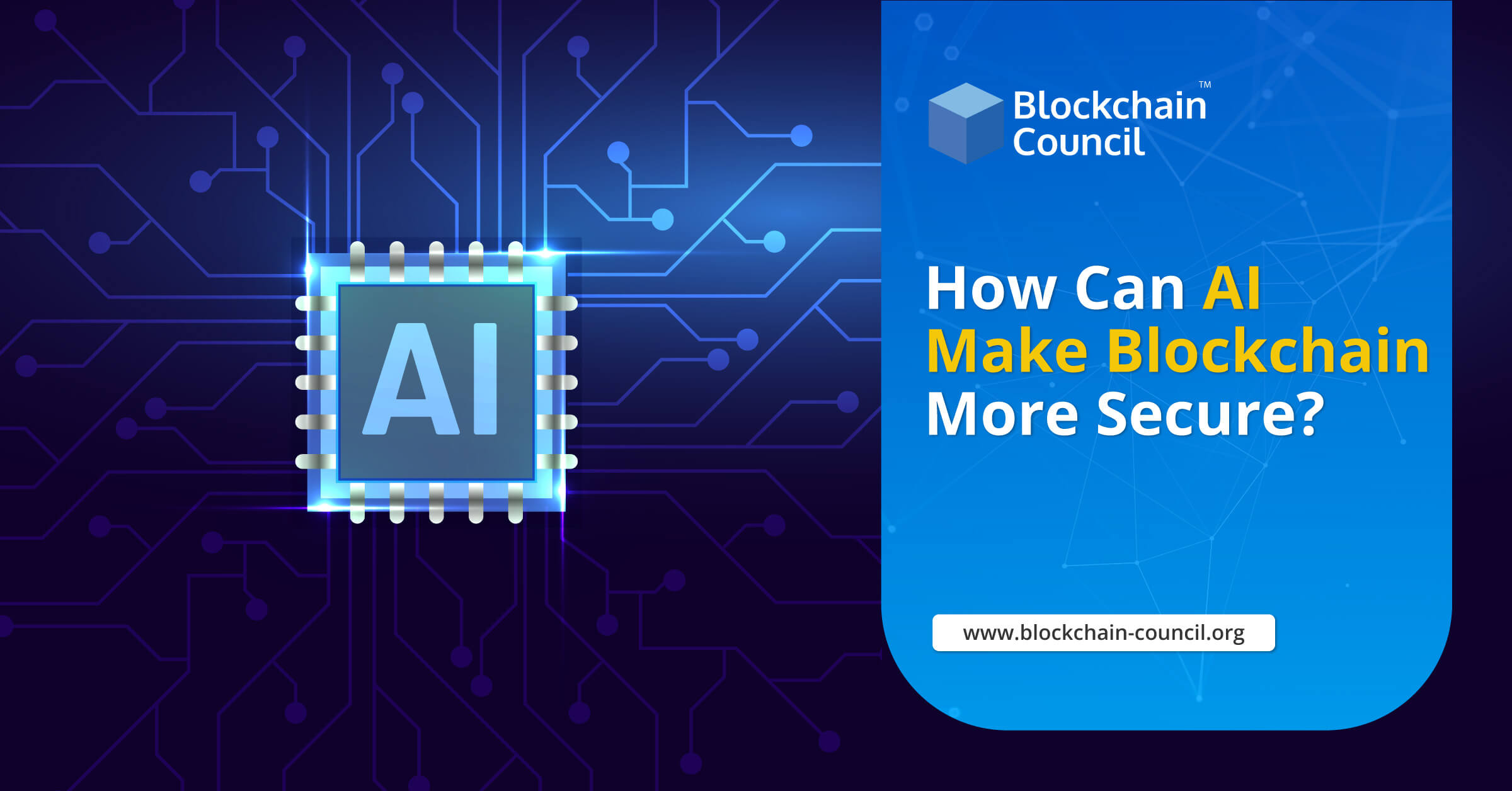
- Blockchain Council
- August 27, 2024
The relationship between Blockchain and Web3 is gaining attention as the internet evolves. Blockchain is the technology behind cryptocurrencies like Bitcoin, while Web3 represents the next phase of the internet, focusing on decentralization.
What is Blockchain?
Blockchain is a digital ledger technology that records transactions across multiple computers in a way that ensures the data is secure and cannot be altered. Each transaction is added to a “block,” and these blocks are linked together in a “chain.” This decentralized structure makes Blockchain transparent and highly resistant to fraud. It’s used in various sectors, including finance for cryptocurrencies like Bitcoin, and for applications such as supply chain management, where it ensures traceability and authenticity of goods.
What is Web3?
Web3 refers to the next generation of the internet that aims to create a more decentralized web, where users have greater control over their data and online interactions. Unlike the current Web2, which is dominated by centralized platforms, Web3 leverages Blockchain technology to enable peer-to-peer interactions without intermediaries. This includes decentralized applications (DApps) and smart contracts that run on Blockchain networks, providing more security and user empowerment.
How is Web3 Different From Web2?
Web2, the current version of the internet, relies on centralized platforms (like Google, Facebook, and Amazon) to manage data and provide services. These platforms control user data, leading to privacy concerns and potential data misuse.
Web3, on the other hand, uses Blockchain to decentralize control. Users can own and control their data, making the internet more transparent and secure. For example, instead of using a social media platform that owns your data, you would use a decentralized application where you own and control your information. Web3 also supports new business models, like decentralized finance (DeFi), where financial services operate without traditional banks.
The relationship between Blockchain and Web3
Blockchain and Web3 are interconnected but distinct technologies. Blockchain serves as the underlying infrastructure for Web3, providing a decentralized and secure way to store and verify data. Web3 uses Blockchain to build decentralized applications (DApps) that can run without intermediaries, enhancing transparency and security. Blockchain enables the core principles of Web3: decentralization, transparency, and trustlessness. Let’s say Blockchain is the engine of a car and Web3 is the car itself — with the engine, the car moves forward, transforming how we drive.
Blockchain is the foundation of Web3
Blockchain is the backbone of Web3. It allows data to be stored in a way that is transparent and immutable, meaning it cannot be changed once recorded. This property is crucial for creating trustless systems where users do not need to rely on a central entity to verify transactions or data integrity. By enabling peer-to-peer interactions and decentralized applications (dApps), Blockchain technology underpins the core structure of Web3.
Web3 expands the capabilities of Blockchain
While Blockchain provides the fundamental technology, Web3 leverages it to create a broader ecosystem of decentralized applications and services. Web3 extends Blockchain’s capabilities by introducing new features like smart contracts, decentralized finance (DeFi), and non-fungible tokens (NFTs). These innovations enable more complex interactions and transactions directly between users, enhancing privacy, reducing costs, and increasing the overall efficiency of digital processes. Web3’s development focuses on creating a user-controlled internet, where data privacy and ownership are prioritized
How do Blockchain and crypto fit into the Web3 ethos?
Blockchain and cryptocurrencies are fundamental to the Web3 ethos, which emphasizes decentralization, user control, and digital ownership. Web3 aims to create a more open and user-centric internet. Blockchain provides the underlying technology for this by enabling secure, transparent, and tamper-proof record-keeping without relying on central authorities. Cryptocurrencies facilitate value transfer and incentivize participation in decentralized networks. This synergy promotes an internet where users have more control over their data, identities, and financial transactions, aligning with the Web3 vision of a more equitable digital world.
Is Blockchain Necessary for Web3?
While Web3 encompasses a range of technologies including augmented reality, virtual reality, and the Internet of Things, Blockchain is particularly critical because it provides the infrastructure necessary for a decentralized internet. Its capabilities to ensure trustless interactions, permissionless access, and enhance user sovereignty over their data and assets make it indispensable for realizing the full vision of Web3. That said, other technologies will also play significant roles, contributing to the immersive and interconnected experience Web3 promises.
What benefits does the relationship between Blockchain and Web3 bring?
The integration of Blockchain into Web3 brings numerous benefits:
- Enhanced security through distributed ledger technology, which is less vulnerable to hacks and fraud
- Faster and cheaper transactions by eliminating intermediaries
- Increased transparency and user control over data, and
- The potential for innovation in how digital identities and assets are managed and used.
This symbiotic relationship supports a more equitable and user-centric internet, paving the way for new business models and opportunities for user engagement that were not possible under the centralized structures of the current Web2.
What is the future for the relationship of Blockchain and Web3?
The relationship between Blockchain and Web3 looks promising and could significantly shape the future of the digital landscape.
Building a new digital economy
Blockchain, the underlying technology of Web3, is setting the stage for a new economic framework, especially through decentralized finance (DeFi). This shift is not only about creating digital money like cryptocurrencies but also about enabling more complex economic activities that can run globally, without the need for traditional financial intermediaries. This could mean easier access to financial services for people who are currently underserved by the traditional banking system.
Enhanced security and privacy
Blockchain technology ensures higher security and privacy for users by decentralizing data storage and eliminating single points of failure. Blockchain’s design inherently encrypts data and distributes it across a network, making it highly resistant to hacks and unauthorized changes. It uses cryptographic methods to protect user data, making it difficult for unauthorized parties to access sensitive information. In Web3, this security extends to applications, transactions, and interactions, offering users more control over their data and digital identities.
Decentralized application development (DApps)
Web3 enables the creation of decentralized applications (DApps) that operate on a peer-to-peer network rather than being hosted on centralized servers. hese applications can be more resilient, transparent, and user-centric. They can bring various innovations in how services are delivered and used, from gaming to social media, where users have more control and ownership of their content and interactions. For example, gaming platforms are integrating Blockchain to allow users to own in-game assets and potentially earn from their gaming activities.
Conclusion
The link between Blockchain and Web3 highlights a significant shift towards a more decentralized internet. Blockchain’s secure and transparent nature provides a strong foundation for Web3’s vision. Understanding this relationship helps us appreciate the potential changes in how we use and interact with the internet, paving the way for a more user-focused online experience.


































































 Guides
Guides News
News Blockchain
Blockchain Cryptocurrency
& Digital Assets
Cryptocurrency
& Digital Assets Web3
Web3 Metaverse & NFTs
Metaverse & NFTs
